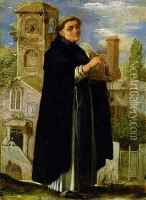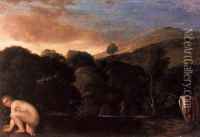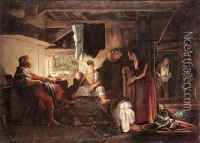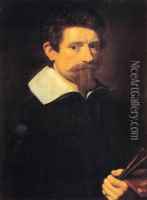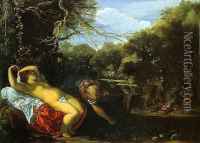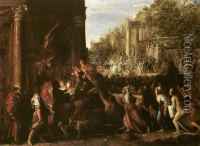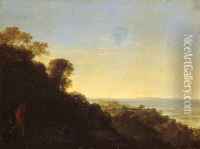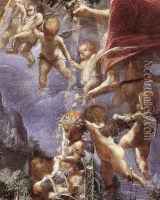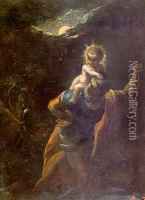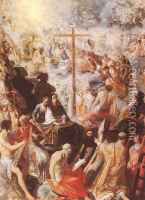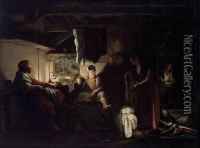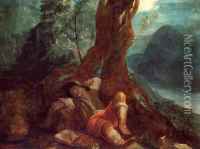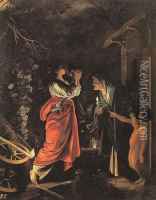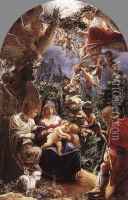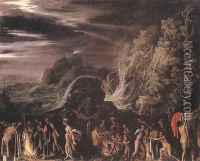Adam Elsheimer Paintings
Adam Elsheimer was a German painter who played a key role in the development of 17th-century landscape painting. Born in Frankfurt am Main in 1578, Elsheimer displayed an early talent for art and was apprenticed to the painter Philipp Uffenbach. His work is characterized by its meticulous attention to detail, use of light and shadow, and the intimate scale of his paintings.
After his apprenticeship, Elsheimer moved to Rome around 1600, which was a pivotal move for his career. In Rome, he became part of an artist community and was influenced by the work of Italian masters, as well as by the northern European artists residing in the city. He was a contemporary of artists like Caravaggio and Annibale Carracci, whose works also influenced his style. Despite his Protestant background, Elsheimer's art often depicted religious subjects, which were popular in the Catholic context of Rome.
One of Elsheimer's most famous works is 'The Flight into Egypt' (1609), which showcases his innovative use of light to create nighttime scenes. This painting is notable for its depiction of the starry sky, which had a significant influence on later artists, including Rembrandt. Elsheimer's small, detailed, and exquisitely finished paintings appealed to collectors and connoisseurs, which was somewhat counter to the trend towards large-scale dramatic works of the Baroque period.
Elsheimer's career, however, was short-lived. He suffered from depression, and his financial situation was often precarious. He was even imprisoned for debt in Rome. Despite his struggles, he continued to work until his untimely death in 1610 at the age of 32. Although Elsheimer died young and produced a relatively small body of work, his influence on the Baroque movement and on landscape painting was profound. His techniques in handling light and atmosphere would be echoed in the works of many future artists.

